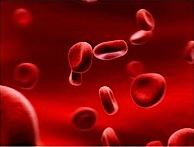Electrodiagnostics and complex electrotherapy e.g. Sonodynator®, ultrasound, interferential current therapy, high-voltage therapy, etc.

The term "electrotherapy" is used to describe the treatment of clinical symptoms by using specially shaped electrical current waveforms. Electrotherapy is not used as an independent form of treatment, but as an interdisciplinary support therapy. However, in the diagnosis of the neuromuscular system, the technique yields independent and indispensable measurements.
Diagnosis and therapy:
Provides precise measurements of the degree of degeneration in the neuromuscular system (current-time curves). Precision monitoring of the resulting therapy parameters used in electrostimulation support treatment of the affected system.
Further objectives:
To act on the secondary symptoms of a disorder or injury to break the vicious circle of pain – hypertonia (increased muscle rigidity) – hypoperfusion (insufficient blood supply) – pain, and to create a favourable starting point for subsequent physiotherapeutic treatment.
Current waveforms:
- direct current .
- low frequency, exponential pulses, faradic current, threshold stimulation current, diadynamic current, ultra-stimulation current, needle-pulse (spike) current.
- high-voltage pulsed current .
- TENS (transcutaneous electric nerve stimulation)
- medium frequency interferential current, isoplanar vector field, dipolar vector field, MF dipolar, MF threshold current.
- high-frequency ultrasound, Sonodynator in combination with diadynamic currents, galvanic currents (sonophoresis), and short-wavelength (HF), decimeter-band (UHF) and microwave radiation
Electrotherapy is an indispensable interdisciplinary aid in the treatment of acute disorders and in rehab programmes in all specialised sectors of medicine.
EMG-diagnostics:
Measurement of electrical potential and for differentiating between neurogenic and myogenic conditions.
The typical electromyographic (EMG) triad for neurogenic changes consists of
- attenuation of motor unit activity pattern ("decreased recruitment");
- pathological spontaneous activity; and
- larger amplitude motor-unit potentials and increased polyphasia.
Myopathic changes are registered by EMG as:
- short duration, low-amplitude muscle contractions ("early recruitment");
- short polyphasic action potentials.
Pulsed electromagnetic field system PEMF®

- The Lorentz force is that experienced by a moving point charge (such as the ions that propagate in the blood and lymph flow) within an electromagnetic field. Positive and negative particles are deflected in opposite directions, creating a charge transfer state within the tissue. This has a major effect on cell membrane processes. These effects are the subject of both theoretical and quantitative experimental studies.
- As oxygen is paramagnetic, it is attracted by an applied magnetic field. The application of a strong magnetic field can therefore influence cellular oxygen supply.
Both of these effects (the Lorentz force and the magnetic attraction) require a very strong magnetic field (flux density of at least 10 gauss or 1 mT). If weaker fields are used, the induced motion is too small and cannot compete with normal diffusion processes.
The pulsed magnetic field has an inductive effect (the same effect that is exploited, for example, in dynamos and electric motors). In response to the application of a pulsed magnetic field, tiny electrical potentials are generated at the synaptic gaps in both the central and autonomic nervous systems. By carefully selecting the pulse frequency, the pulsed magnetic field can therefore exert a controlled influence on the nervous system.
The impact
of pulsed electromagnetic fields on biological systems is essentially based on correcting disturbances to the organism's biomagnetic fields. By careful application of controlled pulse cycles, either as an autonomous or accompanying therapy, the PEMF® technique help to revitalize and rejuvenate the system.
Oxygen:
treatment can be optimised by the additional intake of oxygen-enriched water.
The healing process
can be initiated or accelerated by the PEMF method, and a preventative effect is produced by stimulating the immune system.
Therapeutic effects:
the alternating magnetic field reflexibly influences organic disorders via its interaction with the motor points and zones. The pulsed magnetic field is directed at the dysfunctional areas via the applicators and helps to restore the normal physiological energy balance in cells and at motor points.
- sustained regenerative effect and accelerated recovery
- increases rate of blood flow
- dilates and stabilises of blood vessels
- significant increases oxygen supply
- stimulates blood circulation
- stimulates the metabolism
- activates cells
- improves collagen formation in bones
- strengthens the immune system
- supports lymphatic drainage
- relieves pain
- accelerates wound healing process
- revitalises and regenerates the body, axial organs – spinal column
- selective measurement of joints such as the foot, ankle, knee and hip. Graphic and numerical display facilitating the diagnostic evaluation of static investigations
Neurophysiological electrotherapy myofeedback / "AutoMove"
Concept:

If the patient successfully exceeds the EMG-threshold potential, he is rewarded with the physical movement of the affected body part on which he has been concentrating. As already stated, this improves the cognitive learning process, which in combination with the measurements of reflex responses, movement quality and limb strength (in accordance with the well-known Flug-Meyer model) offers excellent support to the Bobath and PNF-Kabat concepts. The improvements that can be achieved include: limits the degree of atrophy if used early in the stroke rehab process; accelerates improvement in muscle-group activity; simplifies work with other muscle groups requiring treatment; speeds rehabilitation. Myofeedback programmes are individually tailored to reflect the patient's clinical picture and the course of the specific disorder.

 DE
DE
 FR
FR